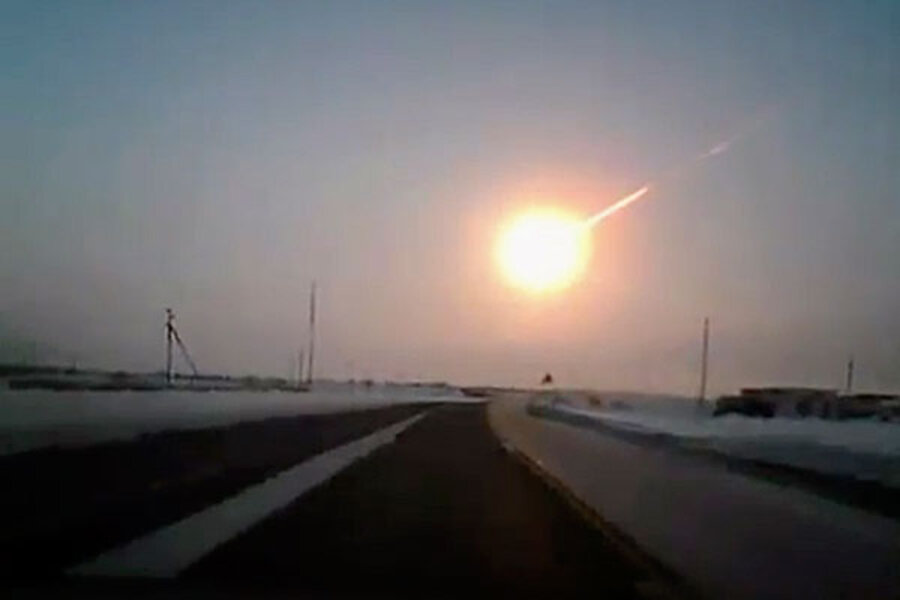Scientists reconstruct Russia meteor trajectory
Loading...
A duo of Colombian scientists say they have reconstructed the orbit of the meteor that exploded earlier this month over Chelyabinsk, Russia.
Relying on videos of the meteor from Chelyabinsk's Revolutionary Square and in the nearby city of Korkino, astronomers Jorge Zuluaga and Ignacio Ferrin at the University of Antioquia in Medellin, Colombia, triangulated the speed and position of the meteorite as it fell to Earth.
Zuluaga and Ferrin's conclusion rests on the assumptions that a 20-foot hole in the ice of Lake Chebarkul was caused by a fragment of the meteor, and that this fragment was traveling along the same trajectory as its parent body. Divers have yet to find a meteorite in the lake.
The pair were inspired by blogger Stefan Geens, who analyzed video of the shadows cast by light poles in Revolutionary Square as the blazing meteor passed overhead. Using simple trigonometry, Geens estimated the path of the meteor, noticing that it squared nicely with an image of the meteor's contrail that just happened to have been picked up by a European weather satellite.
In a paper published online at arXiv.org, Zuluaga and Ferrin took Geen's analysis further, using a gravitational analysis to reconstruct the path of the rock going back four years before impact. Their analysis indicates that the meteor was one of the Apollo asteroids, a class of space rocks whose elongated orbits occasionally cross that of our planet. There are about 5,200 known Apollo asteroids, the largest of them being 1866 Sisyphus, a six-mile wide rock discovered in 1972. Sisyphus is comparable in size to the impactor thought to have caused a global extinction event some 66 million years ago, ending the age of the dinosaurs.
In an effort to prevent a repeat of this sort of event, European Space Agency officials announced a plan to smash a spacecraft into an Apollo asteroid in 2022 to alter its orbit, just for practice. The target of the joint European/US Asteroid Impact and Deflection Assessment mission, a rock named 65803 Didymos, poses no threat to our planet in the foreseeable future, unless of course the mission goes seriously wrong and Didymos is knocked into our path.








